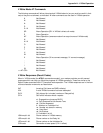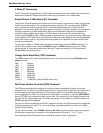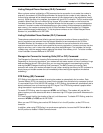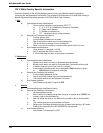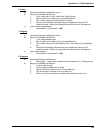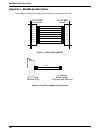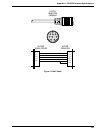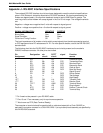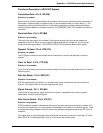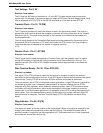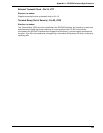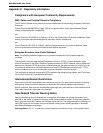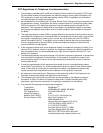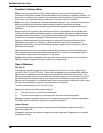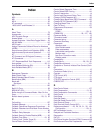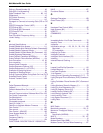
157
Appendix J - RS-232C Interface Specifications
Functional Description of RS-232C Signals:
Transmitted Data - Pin 2, SD (BA)
Direction: to modem
Signals on this circuit are generated by the customer's terminal and transferred to the transmitter of
the modem. A positive signal is a space (binary 0) and a negative signal is a mark (binary 1). The
transmitting terminal should hold this line in the marking state when no data is being transmitted,
including intervals between characters or words. The TRANSMIT (XMT) LED indicates the status of
this circuit.
Received Data - Pin 3, RD (BB)
Direction: from modem
The lead is the data output of the modem. Data signals received from the remote modem are
presented on this line. When no carrier signal is being received (pin 8 negative), this line will be
forced into a marking condition. The RECEIVE (RCV) LED indicates the status of this signal.
Request To Send - Pin 4, RTS (CA)
Direction: to modem
The RTS signal indicates to the modem that the computer or terminal has data that it wants to
transmit.
Clear To Send - Pin 5, CTS (CB)
Direction: from modem
The CTS line indicates to the terminal that the modem will transmit any data present on the Transmit
Data line (pin 2).
Data Set Ready - Pin 6, DSR (CC)
Direction: from modem
DSR On indicates that the modem is in the data mode and is connected to the communications
channel. This signal will be on during analog-loop-test mode.
Signal Ground - Pin 7, SG (AB)
The SG lead is connected to signal ground of the modem. It establishes the common ground
reference for all other interface signals.
Data Carrier Detect - Pin 8, CD (CF)
Direction: from modem
DCD On (positive voltage) indicates that data carrier has been received from the other modem. This
circuit will not normally turn on in the presence of message circuit noise or out-of-band signals. There
is a one second delay between when the carrier tone has been detected and when the CD circuit is
turned on.
This signal goes off if received data carrier falls below the receiver threshold for more than 37 mSec.
When CD is off, the Received Data circuit (pin 3) is held to the marking state.



